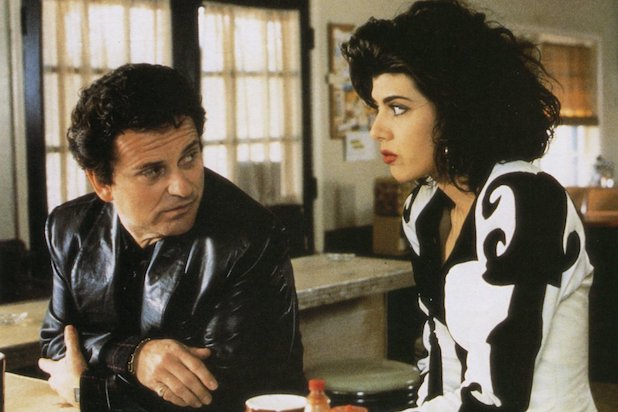Back to the Fox Collection elections now, and you can’t
really argue with this one, given its huge B.O. success, rousing score and
oft-uttered line “I will find you!” even if most often snarkily.
For some reason, back in 1992, crime-drama impresario
Michael Mann (Miami Vice) decided to
take a whack at James Fennimore Cooper’s musty tome The Last of the Mohicans. Was he locked into a deal at Fox for
which he would be proffered a tidy sum for his directorial services? Or was he
feeling nostalgic for a required reading selection from his high school years?
Or, and probably most likely, did he feel he could add a modern day spin to a
timeless tale of action, adventure and the great America tradition of whupping
the ol’ redskins? For whatever reason, Mann’s take on the story took in a
mighty fine 85 million at the box office, made actress Madeline Stowe a major
star and proved that Daniel Day Lewis could carry a film that wasn’t a British
indie about a physically handicapped artist.
So what does a film about the French/Indian war look like in
the hands of the man who brought us Sonny Crocket and our first cinematic look
at Hannibal Lecter? Not terrible, believe it or not. Mann is a visual director,
make no mistake, but he settles comfortably in between the video-game
sensibilities of your Michael Bay and the art-house leanings of a Terrence Mallick
(both of whom have also helmed war epics). Sure, we get the overwrought
bombings of the film’s centerpiece – the evacuation of Fort William Henry (I
mean, can we be realistic about pre-20th century warfare in film? It
took time to pack those muskets, load those cannons). But we also get tender
moments between Hawkeye (Lewis) and Cora (Stowe), with better-than-average
dialogue for films of this ilk. The Brits and the French deliver their lines
with the appropriate, mannered histrionics, and the whole thing is corralled
together with a steadying quasi-realism that gives us the veracity without its
requisite tedium.
Of course, we know the story (dust off those books), but Mann’s Mohicans takes more than a few liberties
with its source. Yes, it begins pretty much the same – Cora and Alice Munro are
being escorted from Fort Edward to Fort William Henry to meet up with heir
father, the soldier in command. Major Duncan Heyward escorts, but Magua, the
Huron native, protects – at least he’s supposed to, When he leads them into an
ambush, Natty Bumpo (Lewis) intercedes. We know him as Hawkeye – a white man
raised as a native by Chingachgook, who also has a purebred son named Uncas.
Hawk and the others lead the women safely to the fort as Magua escapes. Don’t worry;
he’ll be back.
And here’s where movie version breaks from the book. Alice
gets hot and steamy over Hawkeye – as the fort falls to the French, they fall
in love. Colonel Munro, in refusing to offer succor to his Native American
guests, and ordering Hawk’s hanging, comes off as the bad guy. And when
everyone evacuates and Magua comes back to slay the loathsome redcoat in cold
blood, we’re not exactly choked up. Another departure – Alice (not Cora)
becomes attracted to Uncas, and Major Duncan gets burned alive by Magua when
the soldier offers to trade his life for Cora’s. And instead of a big bloodbath
when our heroes meet up with the Delewares, we get more precse deaths – Magua
kills Uncas, Cora kills herself out of grief Chingachgook kills Magua out of
vengeance. All that remain are Chingachgook, Hawkeye and Cora, facing the
future – the horizon – intent on forging the new land with the memory of their
slain brethren and the hope of a brighter frontier.
Mohicans didn’t
exactly set the Oscars on fire that year – as I recall it had Oscar bait
written all over it being a Fall release and having epic themes – and part of
that might have to do with the fact hat it simply didn’t much to say. The
costumes looked great and it was well shot – by today’s action standards it
comes off looking refreshingly deliberate – but in the end we’re just looking
at a sturdy adventure yarn. If they still taught he book Mohicans in schools today I can see this being well-viewed, but
without its mandatory source material I can’t see an overwhelming reason to
revisit this flick.
Ok, maybe a few. It was a pre-CGI, so all of the action
scenes were real people, hard negative, no F/X. The Trevor Horn score is
fantastic, no matter how many times you hear it.
And then there’s Madeline Stowe, who just might have been
the most beautiful woman in the solar system when she was big. Mann knew it
too, with loving, candlelit closeups and lingering profile shots of her
fair-skinned face. Stowe was on fire then, in good films too, and she set my
heart on fire. Boy, I loved the early 90s.
Oh, right, Back to the movie. Overall good stuff. Rent it on
Netflix and have a beer or two. And it might teach you something about early
American history. Maybe.
Rating: ***



